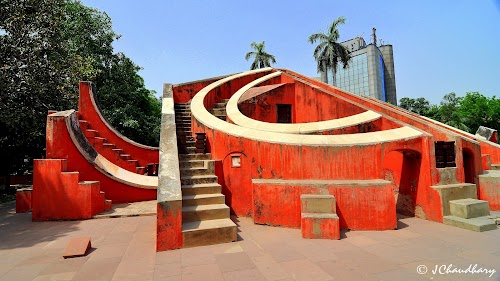
Jantar Mantar
New Delhi, India
- Explore-the-various-astronomical-instruments
- Learn-about-ancient-astronomical-techniques
- Relax-in-the-surrounding-park
- Take-photographs-of-the-magnificent-structures
- Witness-demonstrations-of-the-instruments
Known for:
Description:
Jantar Mantar in New Delhi is an 18th-century astronomical observatory built by Maharaja Jai Singh II of Jaipur. It's a fascinating collection of architectural astronomical instruments, designed to measure time, predict eclipses, and track celestial bodies. The massive structures, including the Samrat Yantra (the largest sundial), Jai Prakash, and Ram Yantra, are impressive feats of masonry and scientific ingenuity. Visitors can explore the site, learn about ancient astronomical techniques, and even witness demonstrations of how the instruments were used. It's a unique blend of history, science, and architecture, offering a captivating glimpse into India's rich scientific heritage.
History:
Jantar Mantar was built in 1724 by Maharaja Jai Singh II, a Rajput king with a keen interest in astronomy. He constructed five observatories across India, including the one in Delhi, as part of his effort to improve astronomical calculations and create accurate calendars. The Delhi Jantar Mantar, considered the most significant of the five, reflects the astronomical traditions prevalent during the Mughal era, combined with influences from Islamic, Hindu, and European astronomical schools of thought. Over the centuries, the observatory has undergone some restoration and conservation work to preserve its historical and scientific significance.